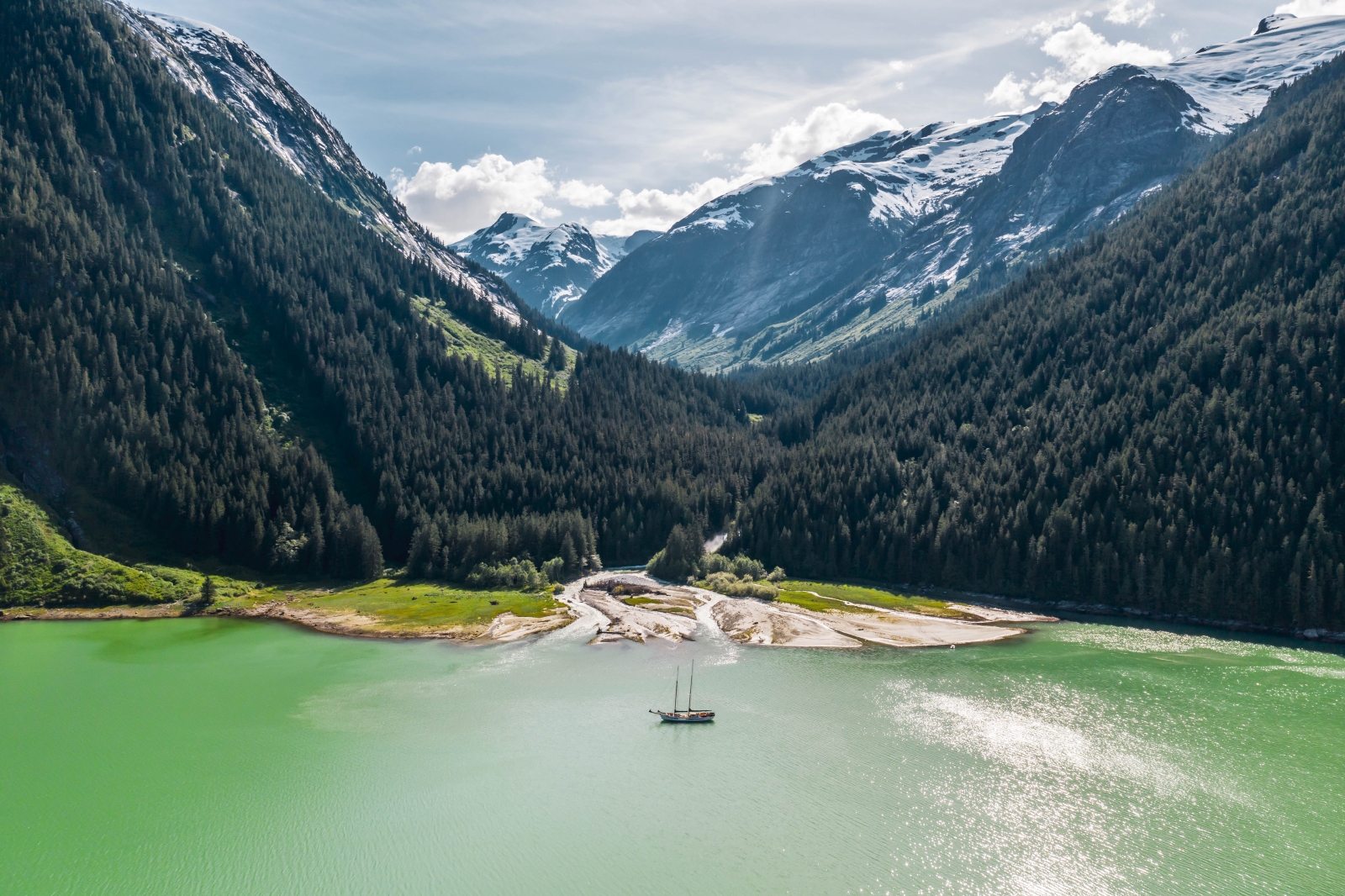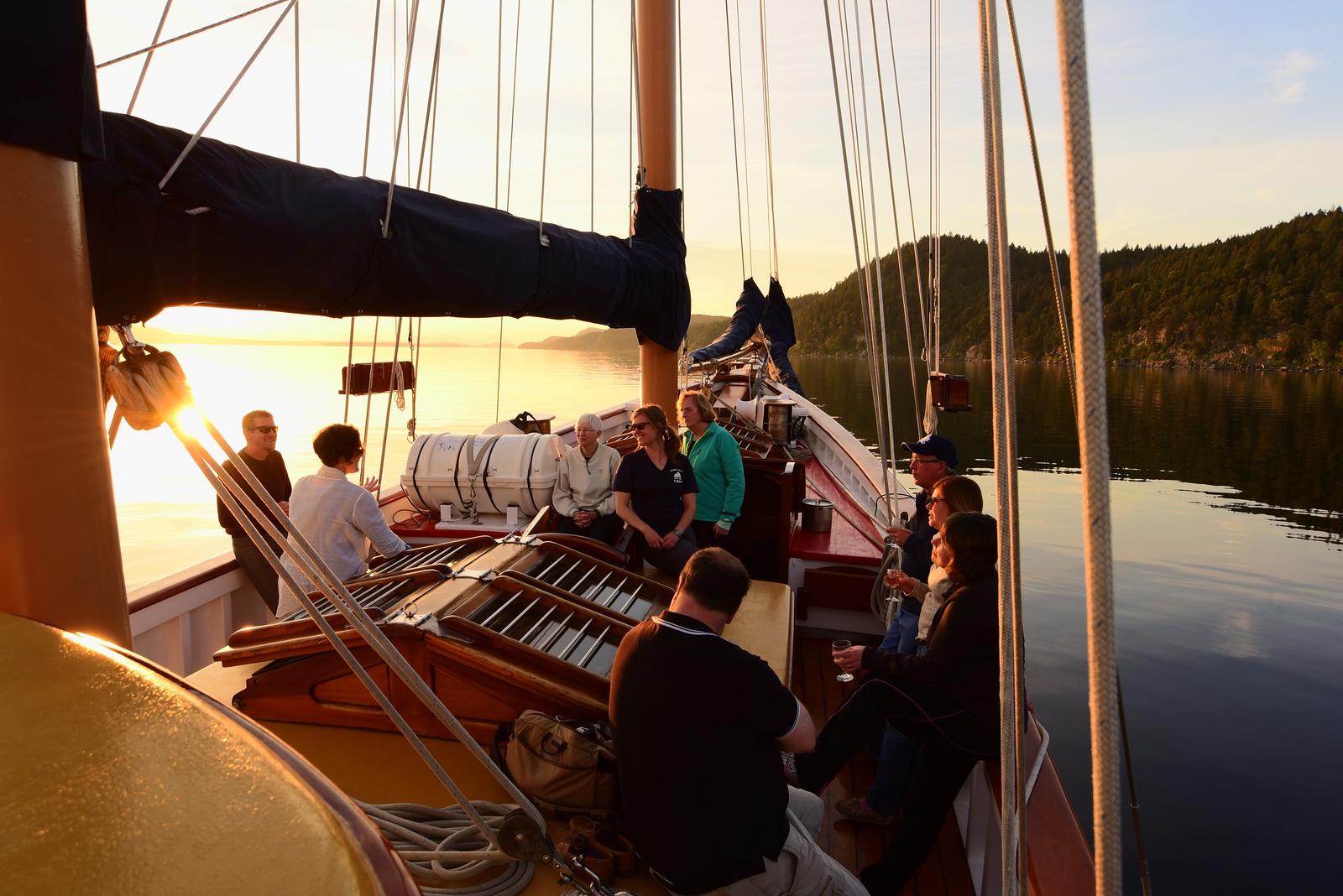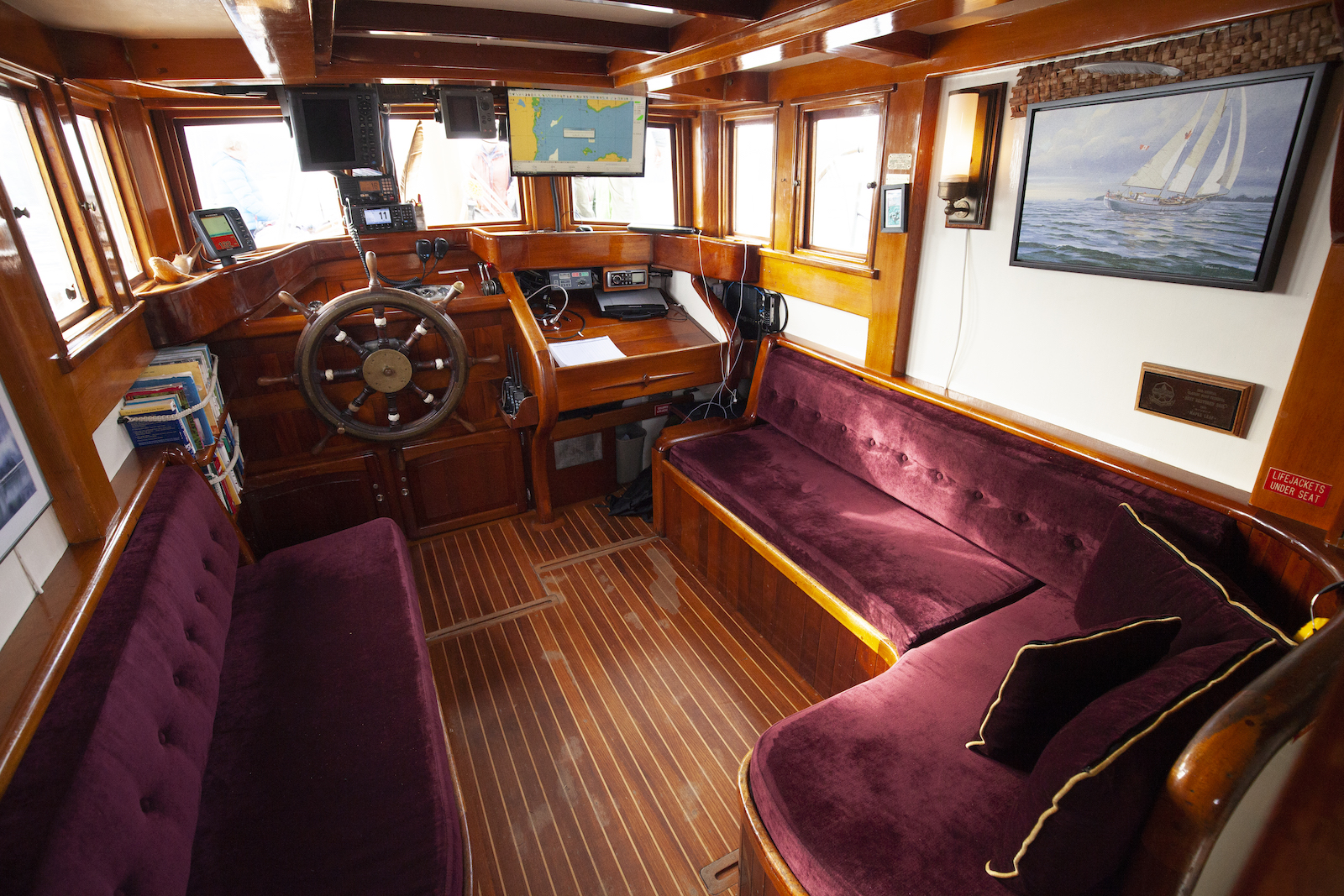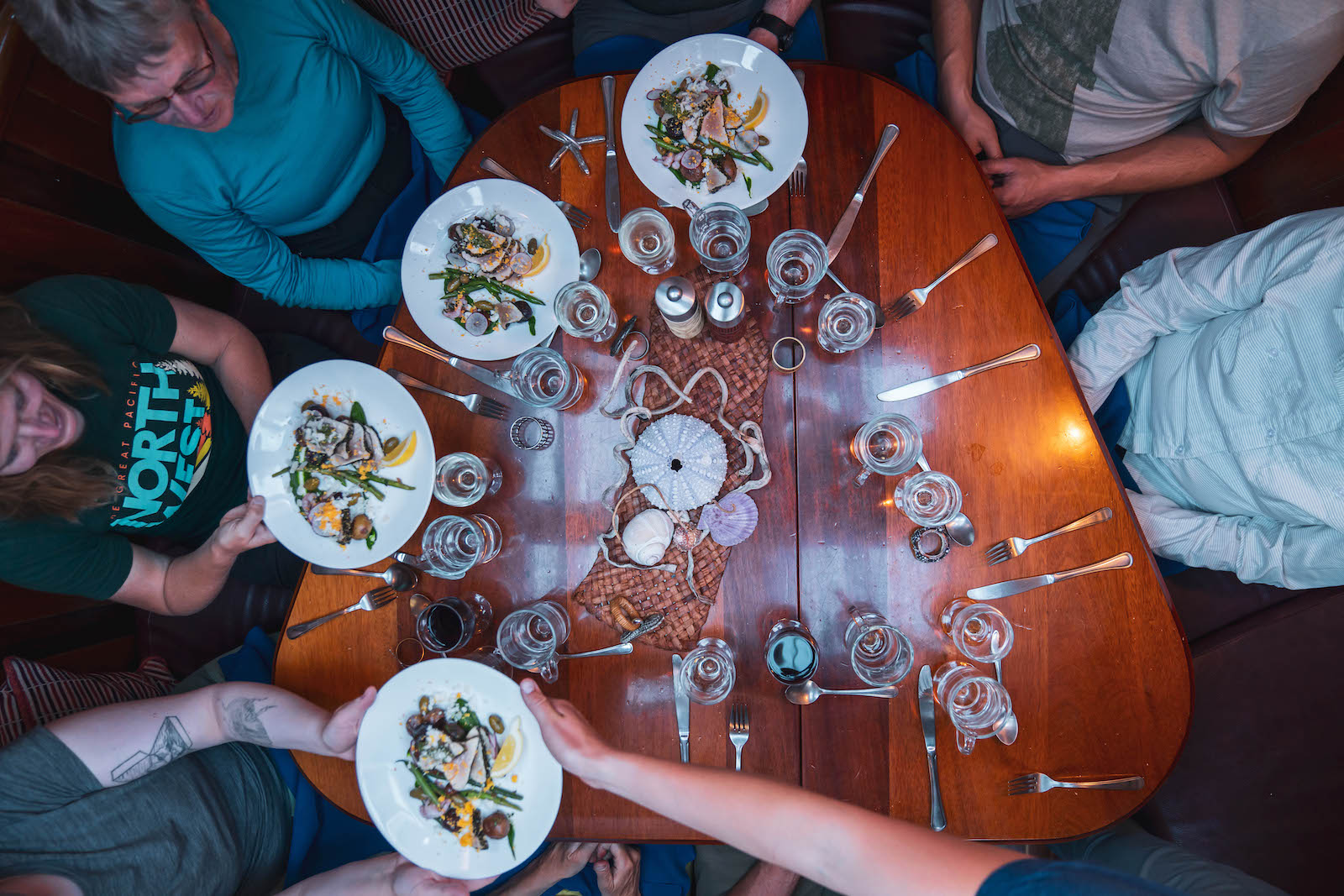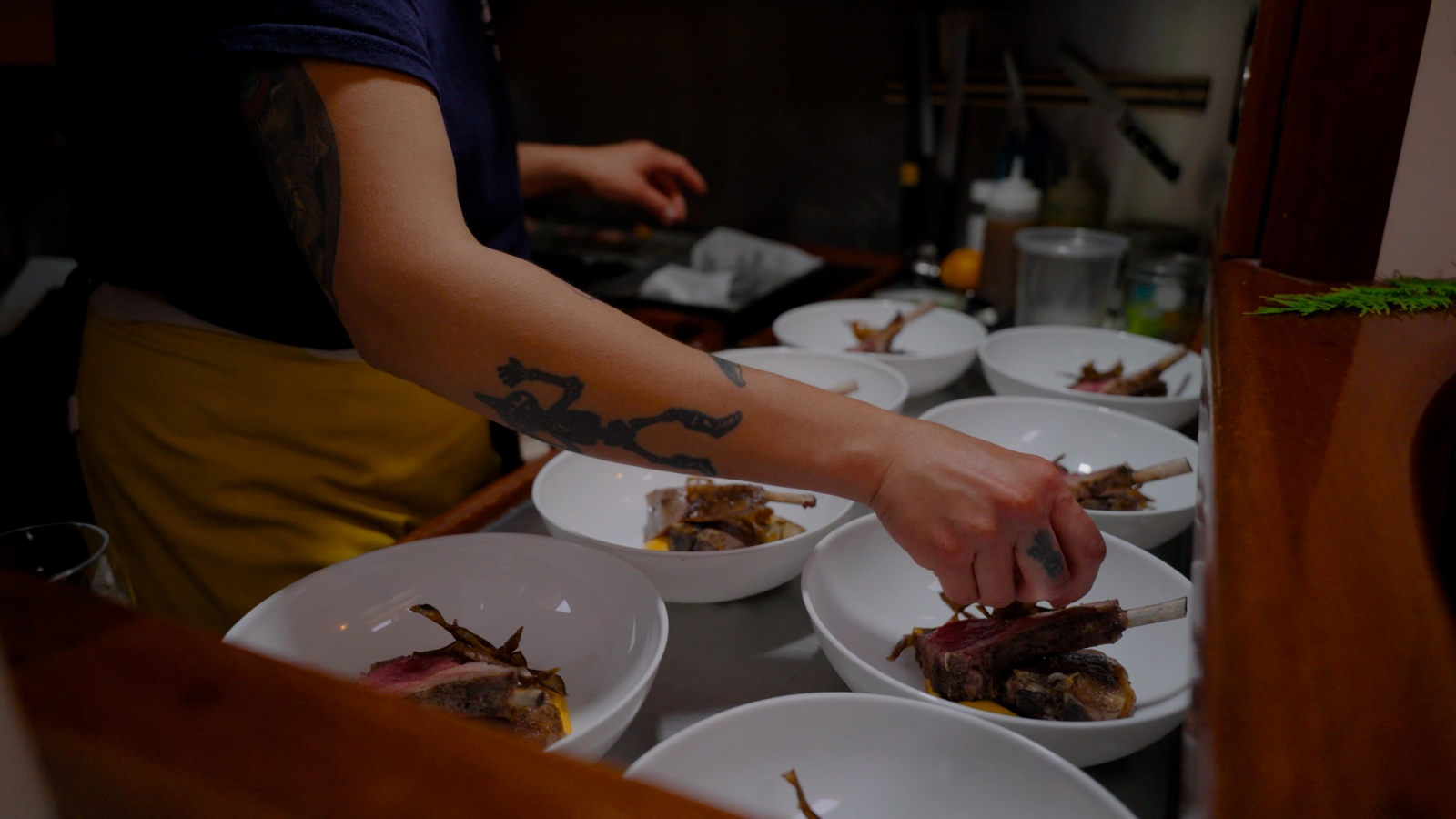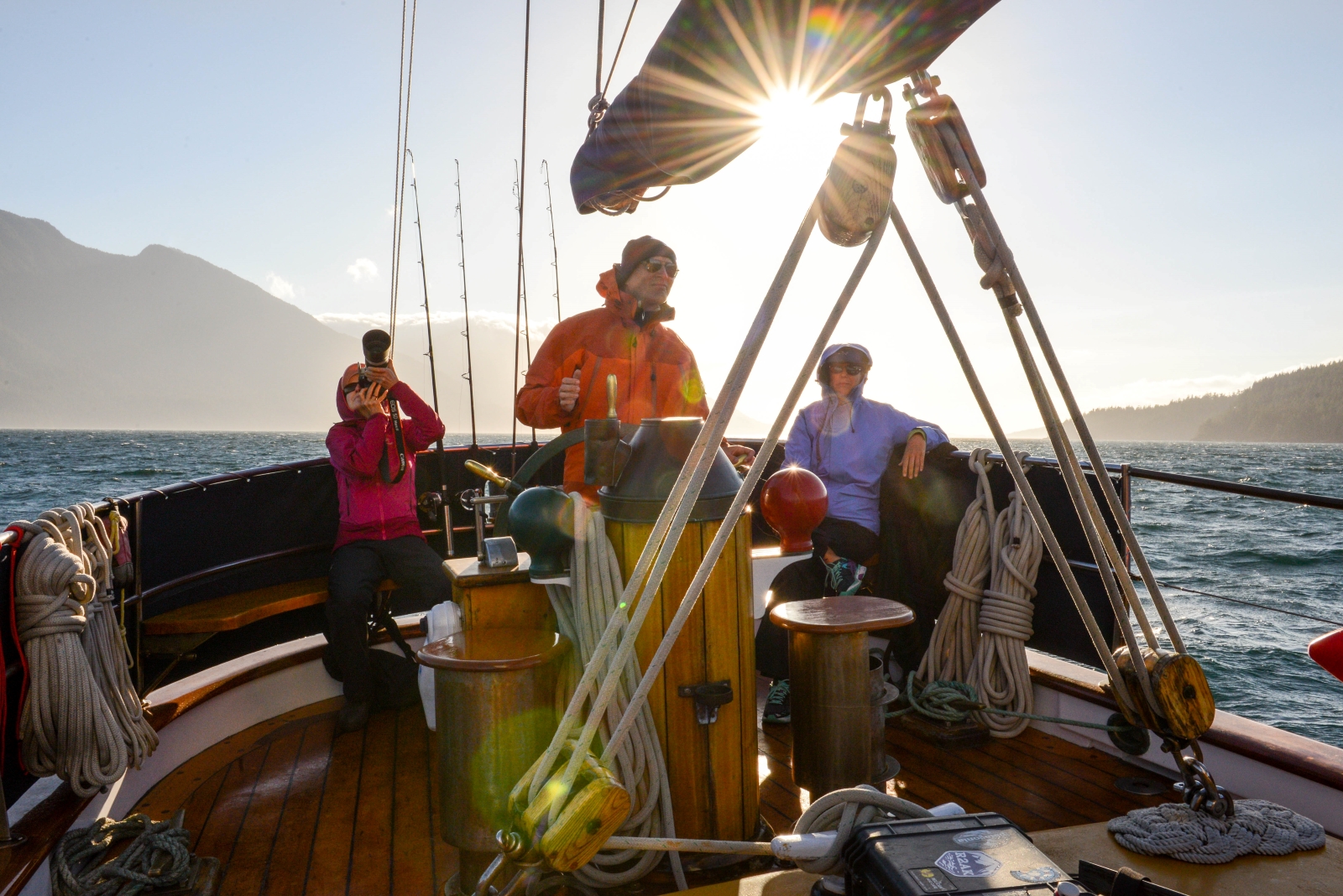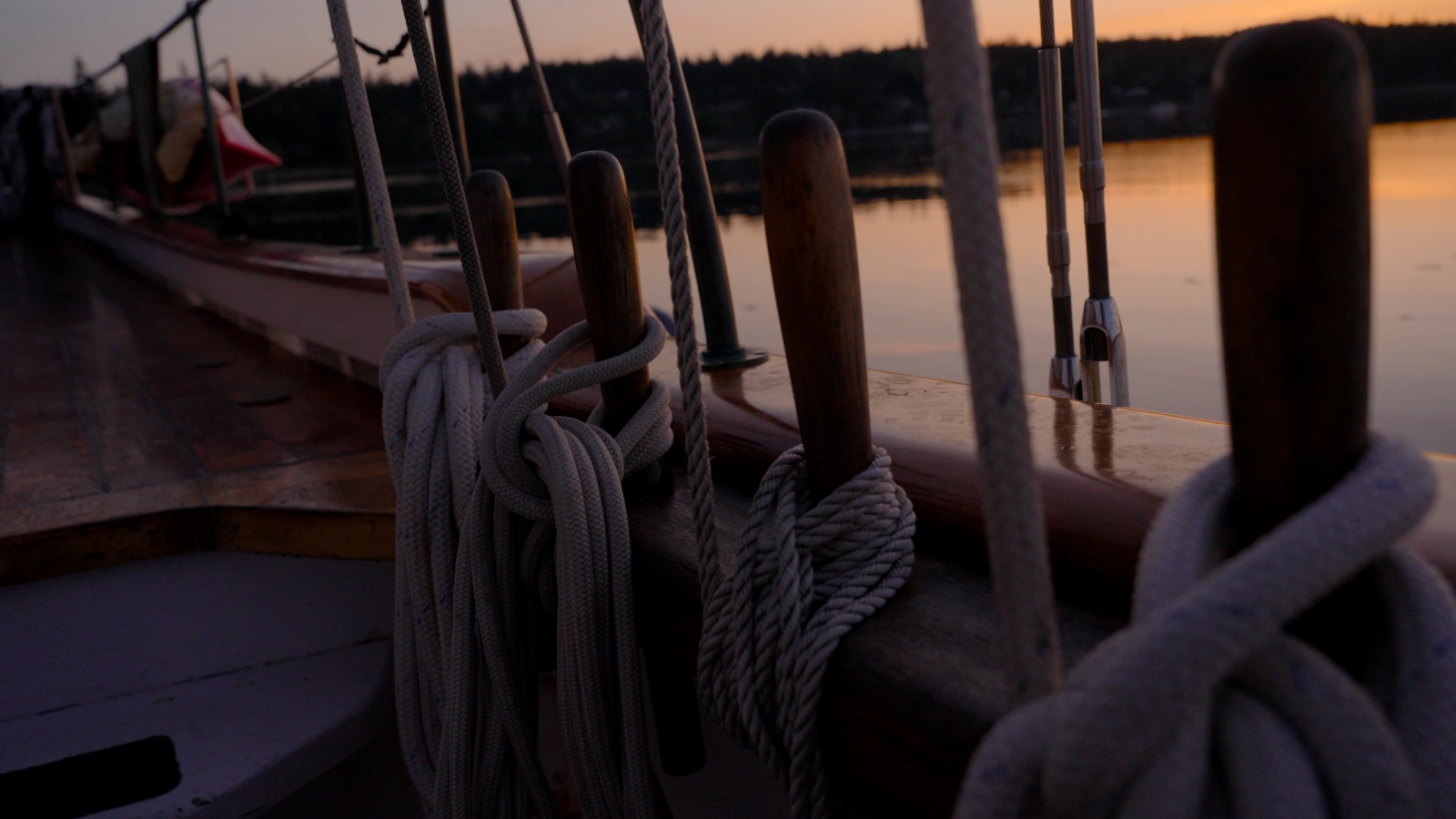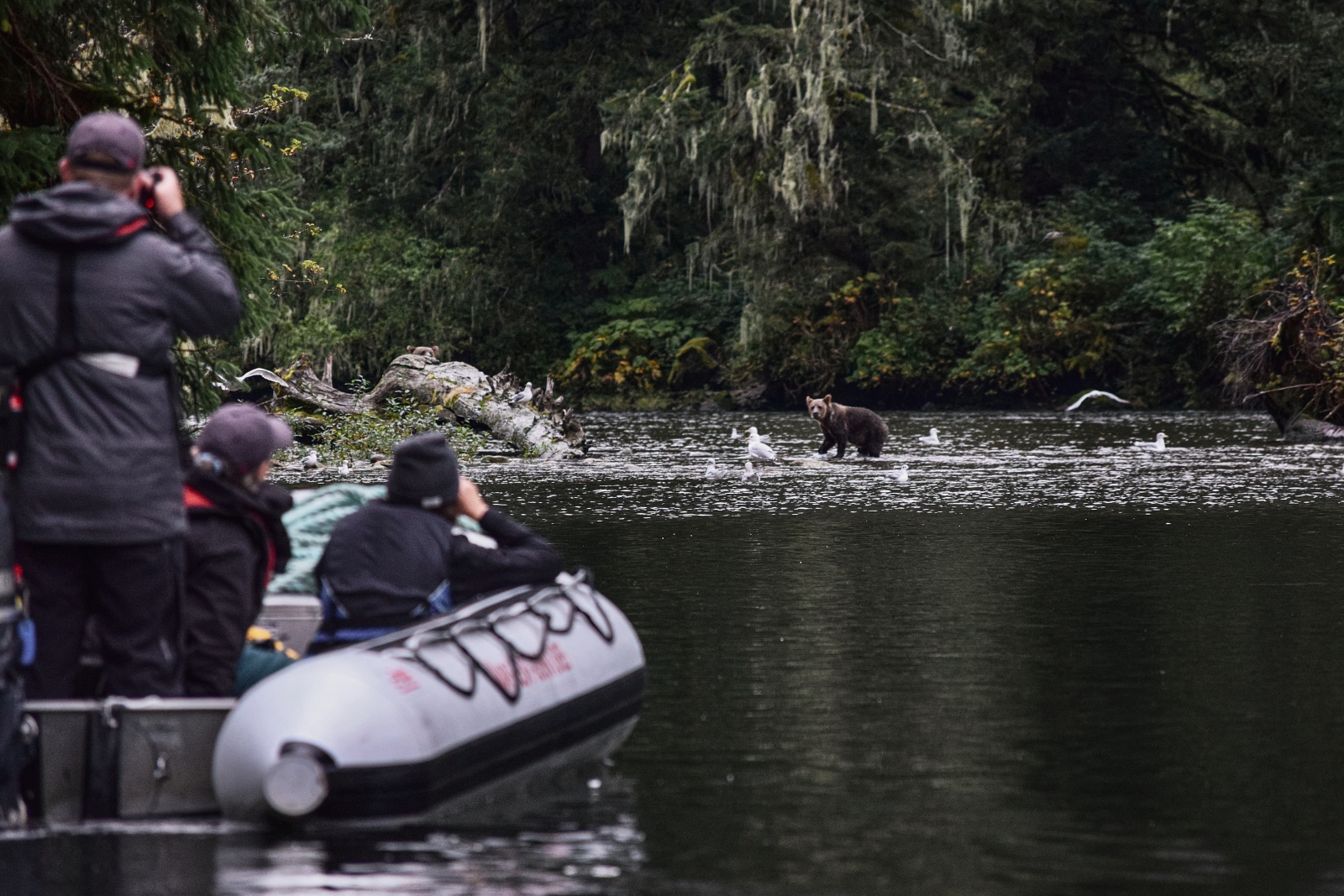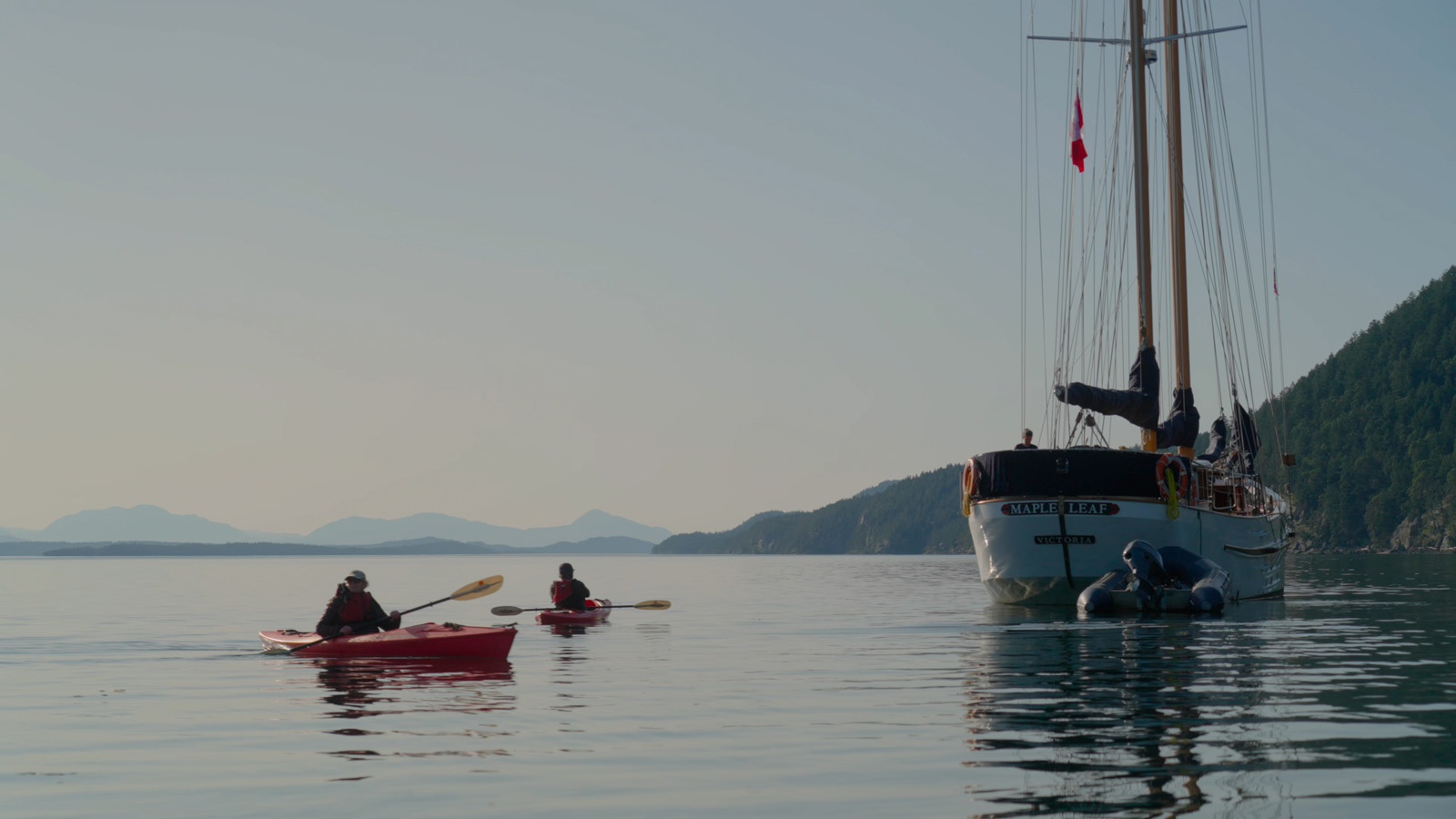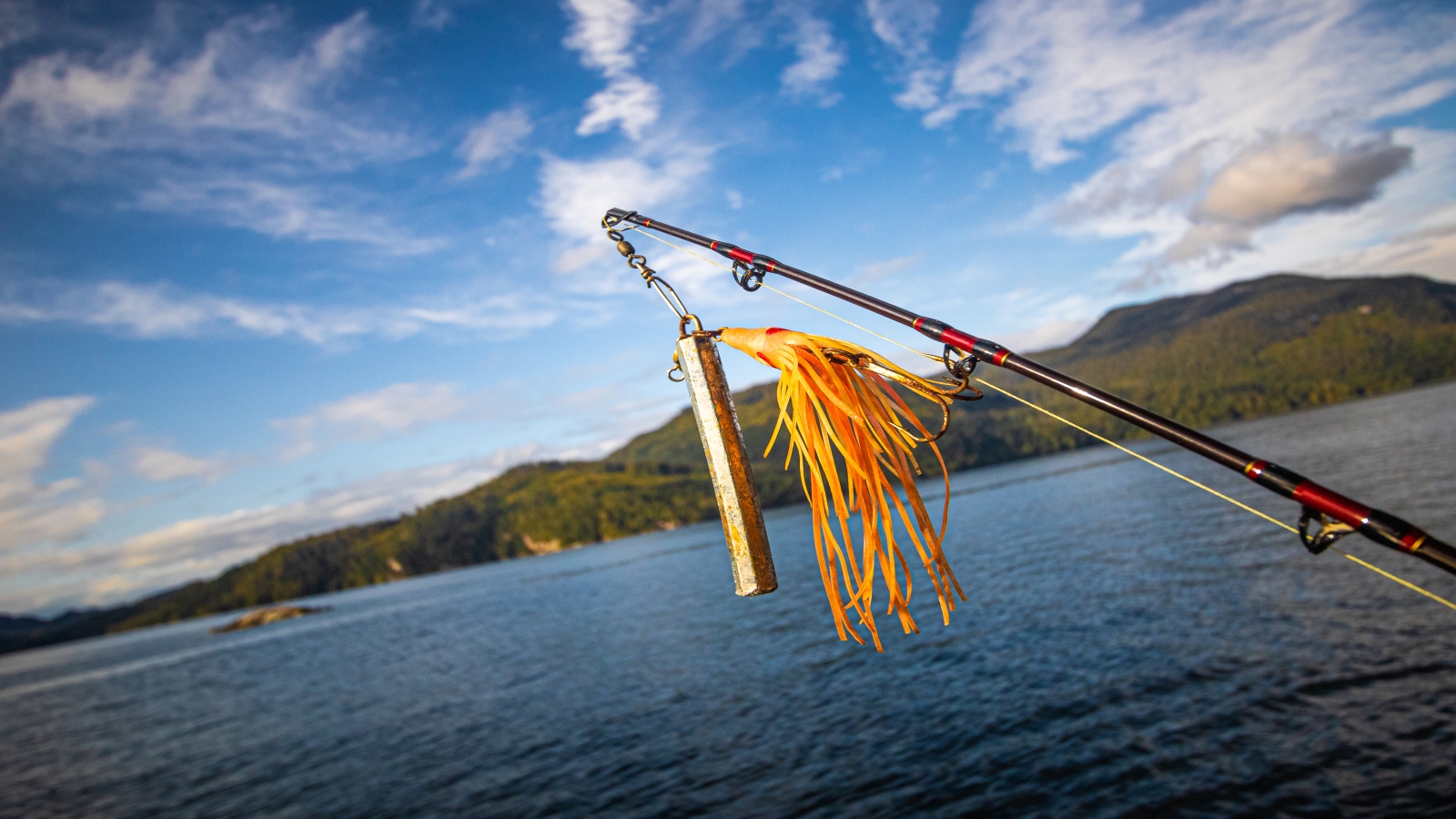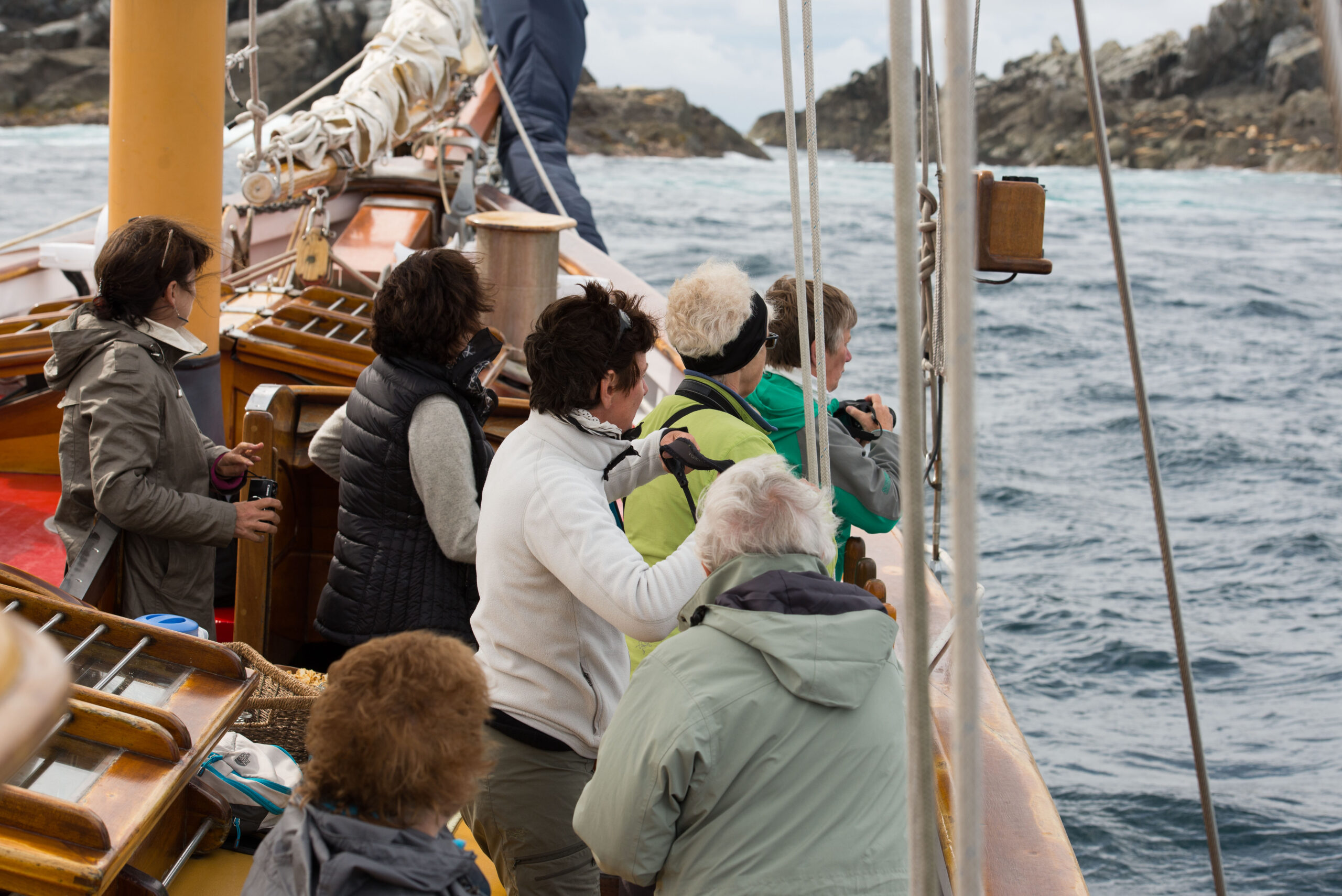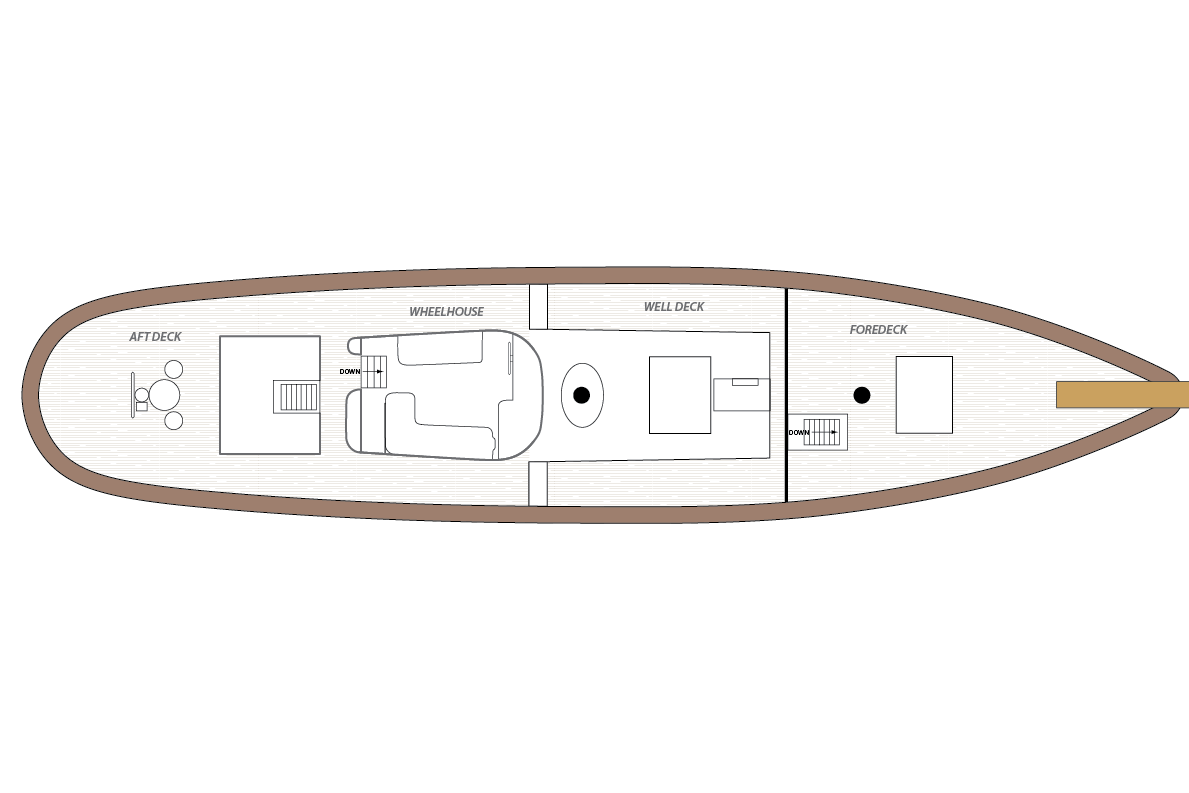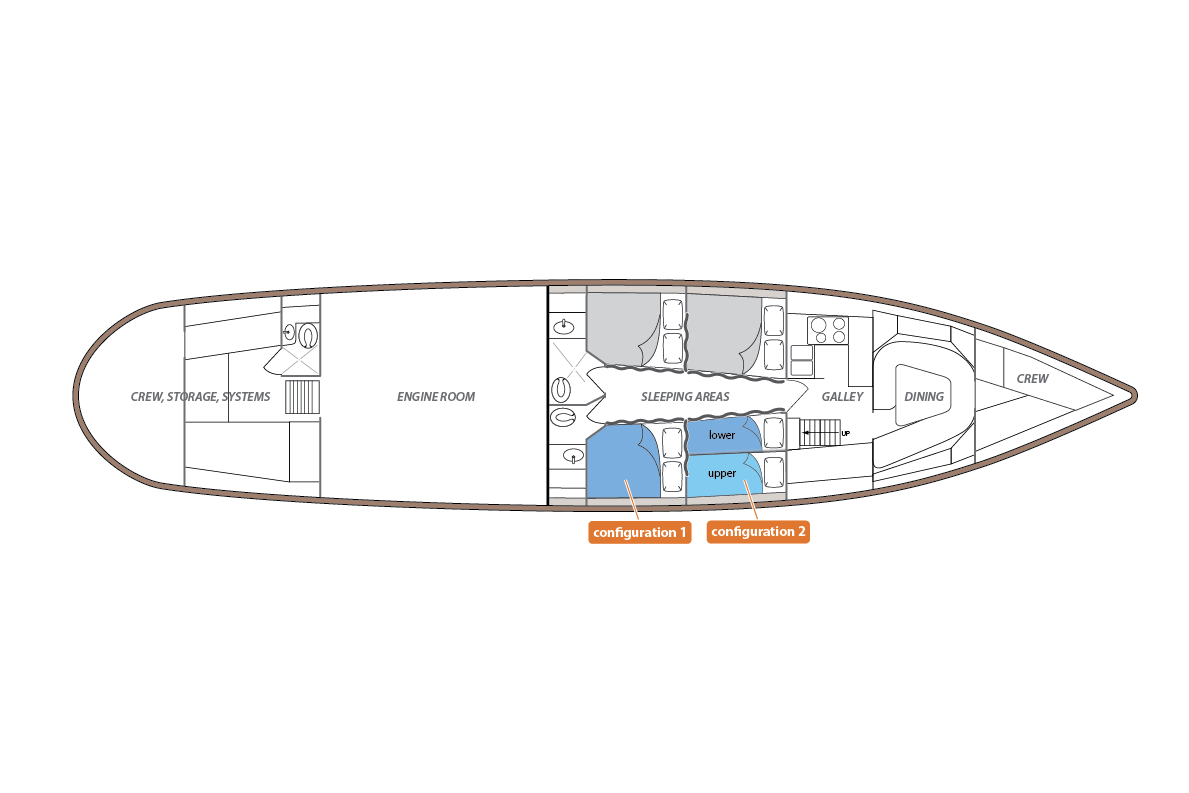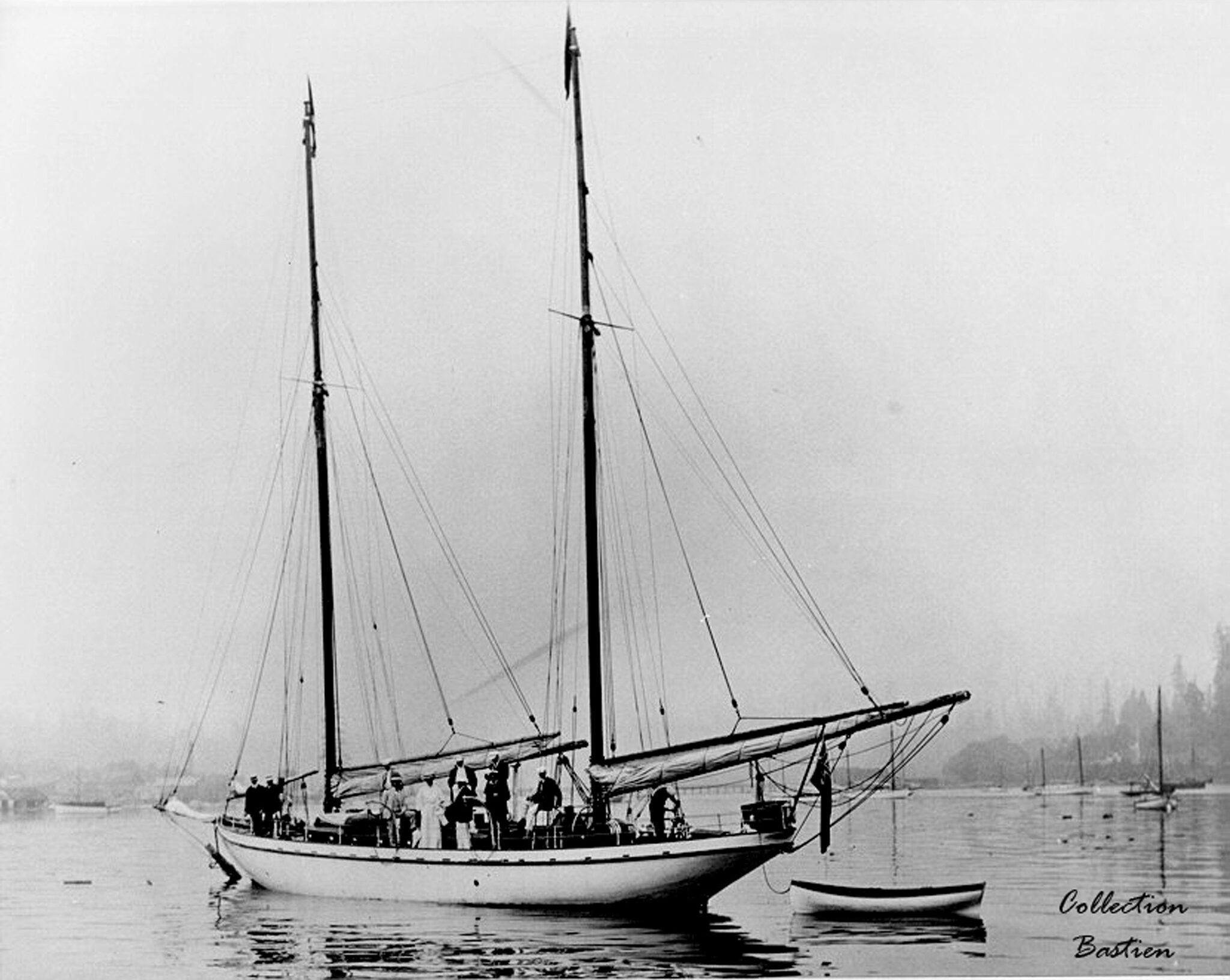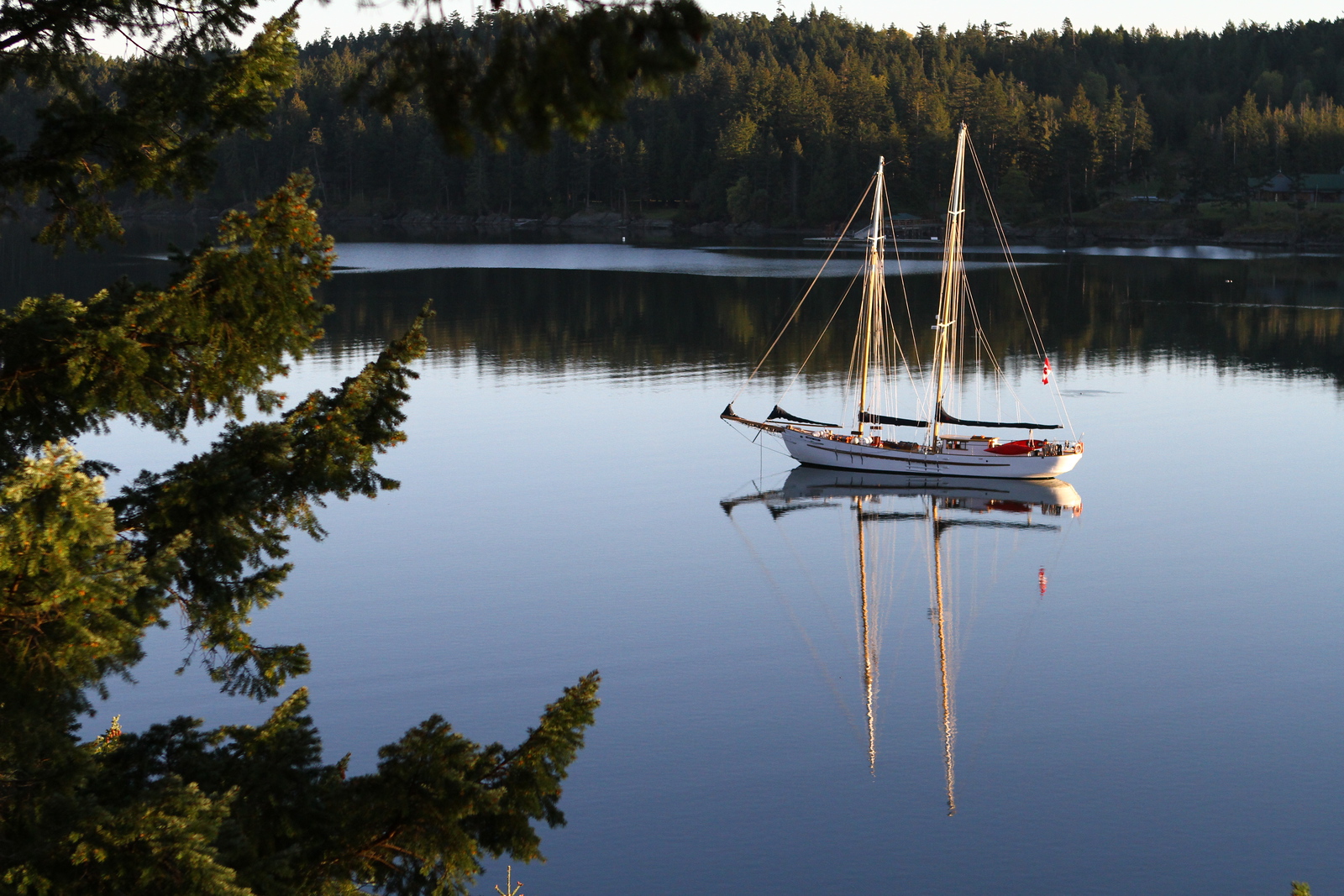
About the Maple Leaf
Outfitted for Engaging with the Natural World
Maple Leaf is a legendary coastal schooner. From her days as a luxury racing yacht, to her reign as tough highliner of the Prince Rupert halibut fishery, Maple Leaf is one of the coast’s most capable, most elegant ships. To travel on her is like being the dinner guest of a well-known explorer with amazing tales, who most people will never get to meet.
At 92 feet overall, she accommodates up to 8 guests in 4 semi-private sleeping areas, with 3 shared washrooms, and a crew of 4 or 5.
Maple Leaf is a sea-kindly vessel with a long range. She can take you to the coast’s wildest, remotest corners more comfortably and safely than most other vessels. Her sails and 40,000-pound keel keep her steady, and her crew’s warmth and culinary delights keep your soul soaring.
Sleeping Areas
Semi-Private Sleeping Areas
The spacious main cabin is airy and divided by half-walls and heavy curtains into four berths, providing sleeping accommodations for eight guests.
Each area contains large comfortable beds (six and a half feet long), space for your belongings, brass reading lamps, fluffy duvets and blankets. Charging stations, towels and reading lights.
There are three heads (washrooms) aboard, all with hot running water and shower conversions.
If you are a solo traveller, you will be sharing one of the sleeping areas with a same-sex solo traveller, or you will have a bunk in our comfortable wheelhouse accommodations.
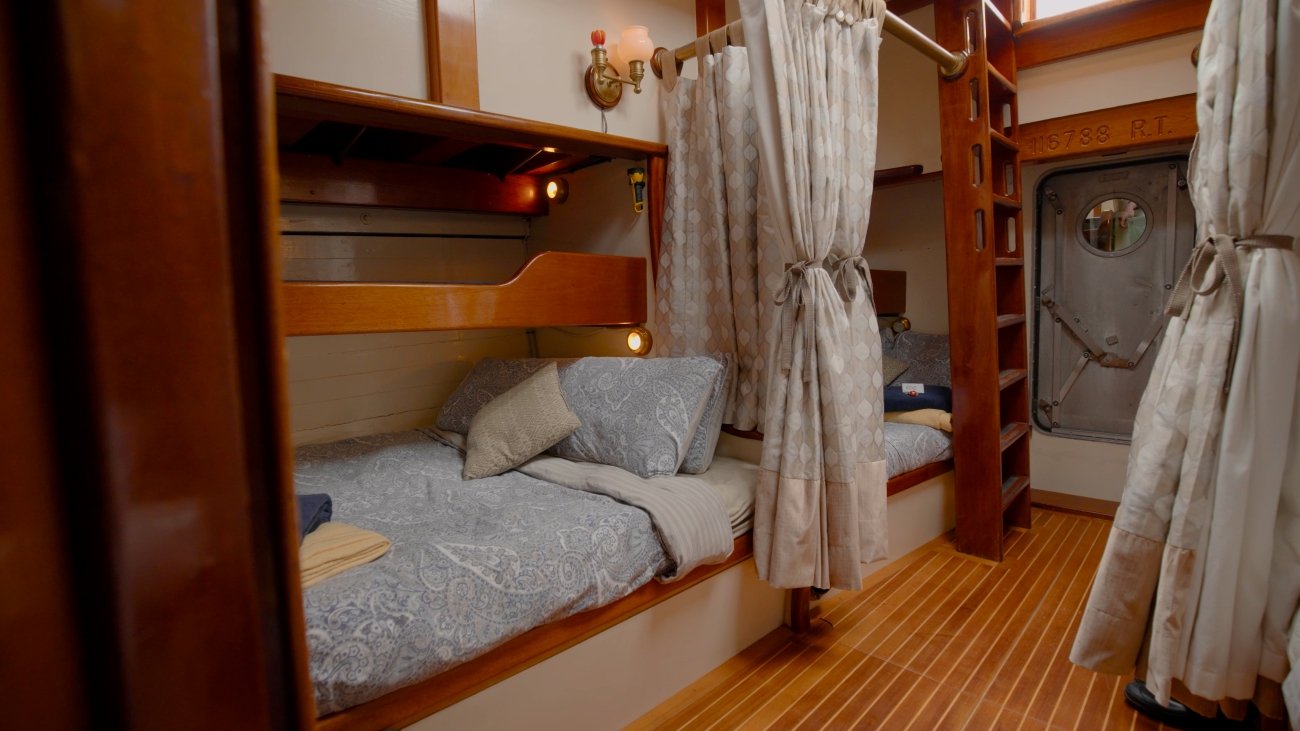
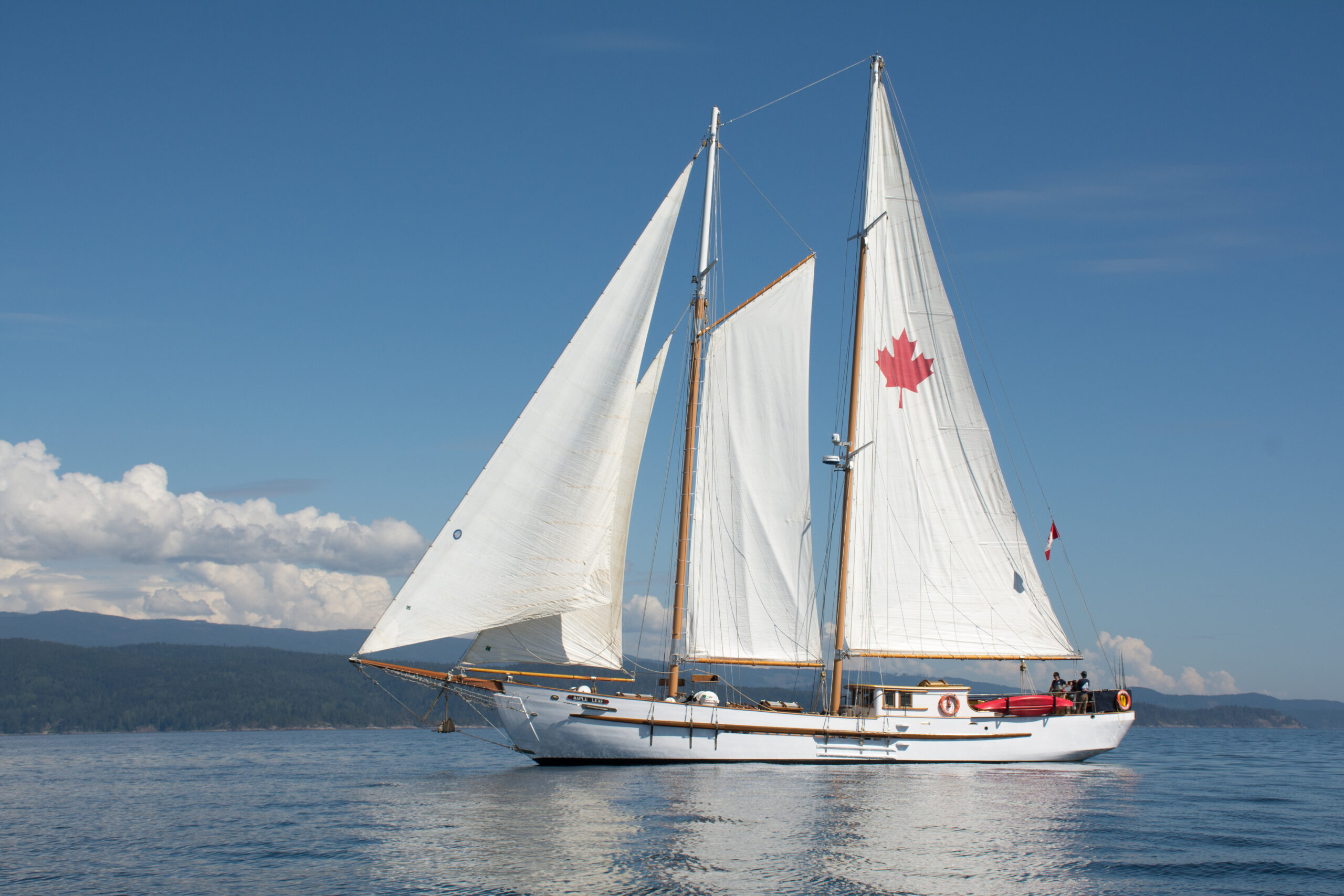
Under Sail
A Great Sight at Sail, an Even Greater Feeling
With thousands of square feet of canvas (or, dacron), the Maple Leaf is a joy to sail. You are welcome to help with sailing and taking the helm under our crew’s instructions. We are patient teachers and delight in helping people learn. On the other hand, you are not required to sail or perform duties while you are on vacation. The choice is yours.
Maple Leaf is a schooner, meaning that her aft mast is taller than her foremast. She has five sails: main sail, foresail, staysail, jib, fisherman.
Physical Eligibility
Mobility Requirements Aboard Maple Leaf
To fully enjoy your experience aboard Maple Leaf, there are a few physical requirements to keep in mind. To enter and exit the dining lounge and sleeping areas, you will need to be comfortable climbing a steep ladder-like staircase with handrails. Her interiors feature narrow passages, inviting you to adapt and embrace the authentic small ship experience.
Exploring the coast’s picturesque surroundings often means venturing onto a zodiac. With a helping hand, you’ll need to be able to comfortably step into and out of the zodiac from the ship’s deck or onto a beach with no docks. Disembarking the zodiac involves sitting on the side of the pontoon, swinging your legs over the side, and standing up, with assistance from your crew.
The Maple Leaf is a very comfortable ship that welcomes guests of all ages, though if you have a physical limitation, you may consider Swell or Cascadia as more accessible options. For more guidance on the mobility requirements of our trips, visit this article.
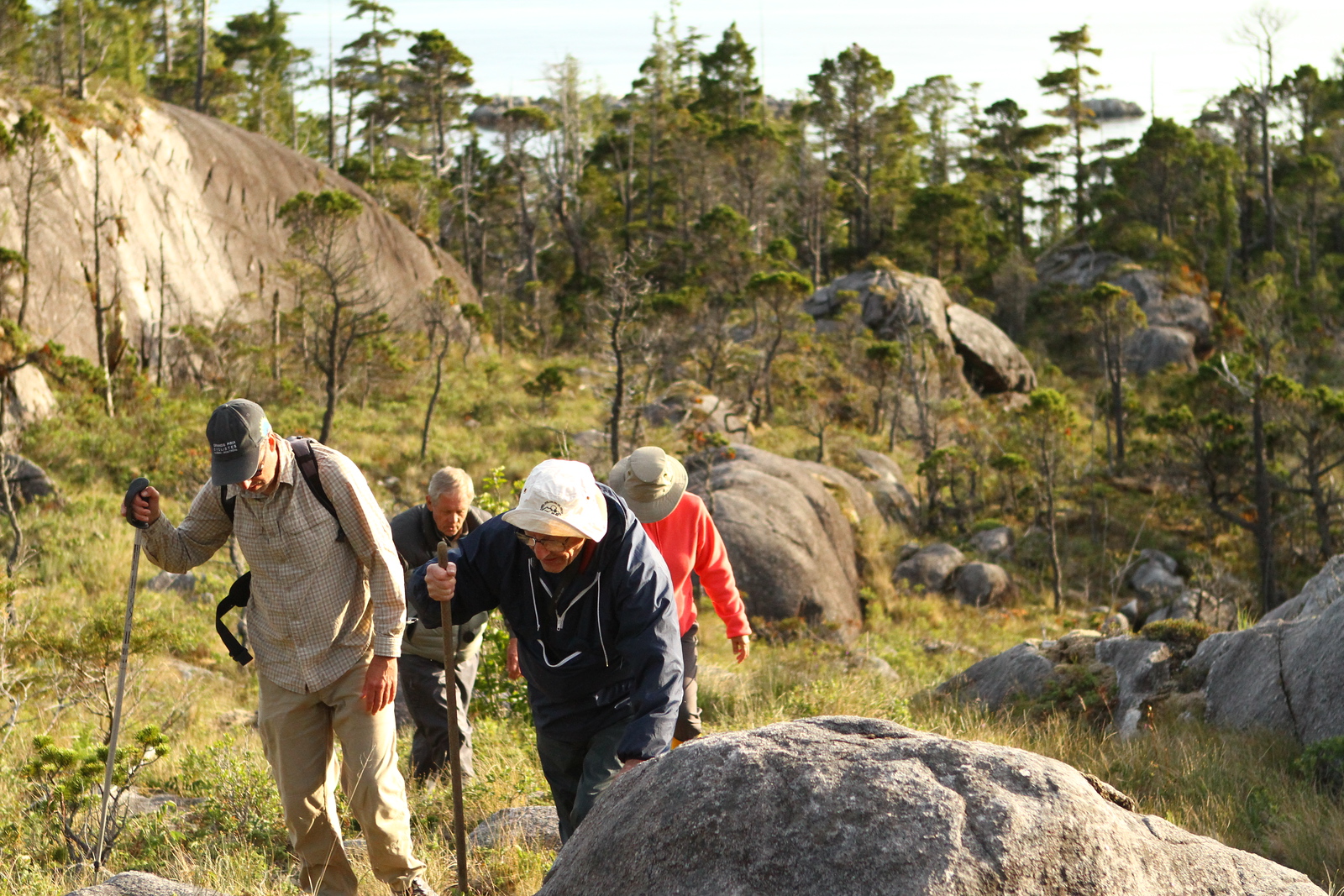
History of the Maple Leaf
Maple Leaf’s History Chronicles Wars, Fishing and a Remarkable Rebirth
Maple Leaf, BC’s historic tall ship, was built in 1904 by William Watts in Vancouver Shipyard. Initially a private yacht for Alexander Maclaren, she boasted the title of the most expensive pleasure craft on the Pacific Coast and was the first ship north of San Francisco with electric lights and an external lead keel.
She was favoured to win the first ever Trans Pacific sailing race from San Francisco in 1906. But when the San Fransisco earthquake devestated the city, the race was postponed and move to LA and the Maple Leaf never participated. So we will never know if she had been fated to become the Bluenose of the Pacific.
During the First World War, her lead keel and brass were stripped for the war effort, leading to her conversion into a halibut fishing vessel. For two decades, she fished under famous fishing companies such as Gosse and Millerd and the Canadian Fishing Company.
Purchased by Harold Helland in 1938, Maple Leaf, renamed Parma, was completely rebuilt during World War II. Harold, along with a dedicated crew, fished for halibut in the Bering Sea until the mid-1970s, consistently surpassing newer vessels in performance. Harold maintained his ship in Bristol condition until his retirement in 1978, when she was sold to the Canadian Government.
In 1980, Brian Falconer and Susan Tweedie restored Maple Leaf to a sailing ship, uncovering her original hull lines and re-registering her. From 1986 to August 2001, Brian, Susan, and later Brian with partner Erin Nyhan, operated Maple Leaf Adventures, providing natural history and cultural trips along the BC and Alaska coasts. They also ran the Tall Ship Program for the Royal Canadian Sea Cadets, training over 3,000 cadets from across Canada.
Since 2001, Kevin Smith bought Maple Leaf and her eponymous company from his mentors Brian and Erin. He and partner Maureen Gordon have continued to steward the Maple Leaf and its company, adding Swell and Cascadia to the fleet. Kevin and Maple Leaf have continued her tradition of helping to protect the places of the coast, including bringing places like the Great Bear Rainforest to international media audiences. The ship continues to be meticulously maintained by her loving crew, drawing admiration at sea and alongside.
Maple Leaf: A Timeline
- 1904: Built as the coast’s most expensive yacht
- 1906: Favoured to win first Trans-Pacific sailing race
- 1914: The war changes Maple Leaf’s fate
- 1930s-1970s: Fished for halibut in the Bering Sea, often the highliner
- 1979-1986: Refit back to a sailing ship and re-launched at the 1986 World Exposition in Vancouver
- 1986-present: A trailblazer in the expedition cruising world, and a co-creator of expedition cruising in the Great Bear Rainforest and other areas on the coast.
